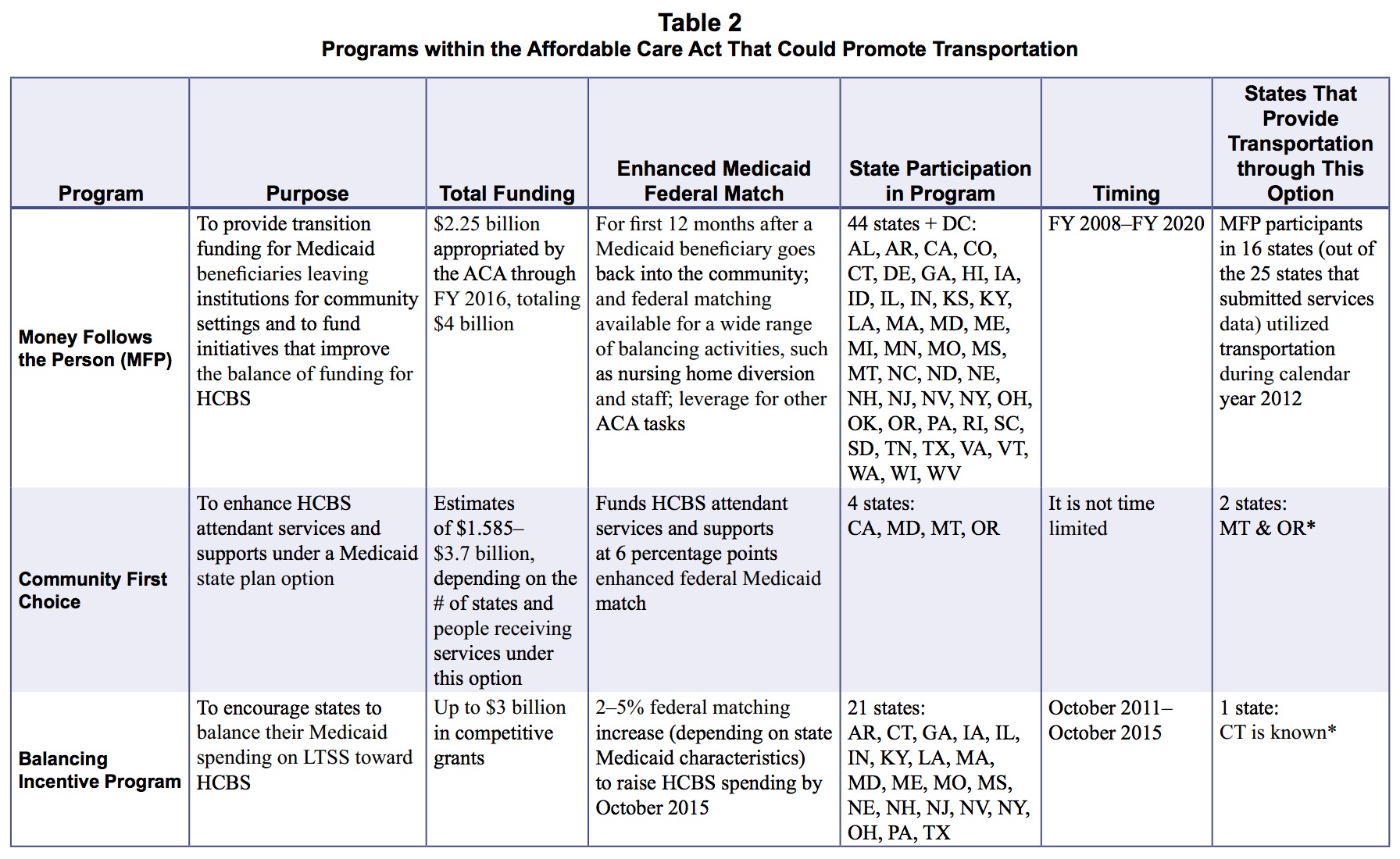AARP PUBLIC POLICY INSTITUTE
The Affordable Care Act (ACA) provides new but limited opportunities to promote or fund specialized transportation services for older people and adults with disabilities. This paper explains how states can use these largely untapped options to expand services for targeted low-income populations with mobility needs. It also presents two case studies illustrating how the Atlanta region and the state of Connecticut are making this work.
Many states are taking advantage of new options within the Affordable Care Act (ACA) to improve access to care for the chronically ill and to promote community living for older adults and adults with physical disabilities. However, relatively few states are expanding transportation services through these new initiatives for low-income people with mobility limitations. This paper explores the ACA options that could expand specialized transportation for Medicaid and Medicare beneficiaries, and for people who are dually eligible for both forms of coverage. It also provides state examples and two case studies to illustrate how these options can work.
Growing Need for Specialized Transportation
Transportation is vital to helping people with mobility limitations live as independently as possible. Many older people and adults with physical disabilities need specialized transportation—such as door-to-door paratransit or escorts into doctors’ offices—that can be provided upon request by van, small bus, or taxi. Specialized transportation is especially critical for high-risk, low-income populations who do not drive and have difficulty taking public transportation because of disability, age-related conditions, or income constraints.
In a given year, about 3.6 million Americans miss at least one medical trip for lack of transportation; this population is disproportionately female, older, poorer, and has a higher rate of multiple conditions. Many people ages 70 and older will outlive their driving years; on average, men for 7 years and women for 10 years. Without transportation, the ability to live in one’s home and community is compromised. Also, improving access to care for transportation-disadvantaged populations can reduce national health care costs, possibly offsetting the increase in transportation costs.
Specialized transportation can help states and communities achieve the ACA’s goals. Transportation is an important element for states balancing their Medicaid programs toward home- and community-based services (HCBS); enabling people to access preventative care; improving health outcomes; and avoiding unnecessary hospital readmissions.
Download full version (PDF): Expanding Specialized Transportation
About the AARP Public Policy Institute
www.aarp.org/research/ppi
The Public Policy Institute (PPI) is the focal point of public policy research, analysis and development at AARP. Led by AARP Senior Vice President Susan Reinhard, PPI’s staff works to design policies that have a significant impact on improving economic security, health care and quality of life. Founded in 1985, PPI publishes staff research and analysis regularly throughout the year.
Tags: AARP, AARP Public Policy Institute, ACA, Affordable Care Act, Atlanta, Connecticut, CT, GA, Georgia







 RSS Feed
RSS Feed